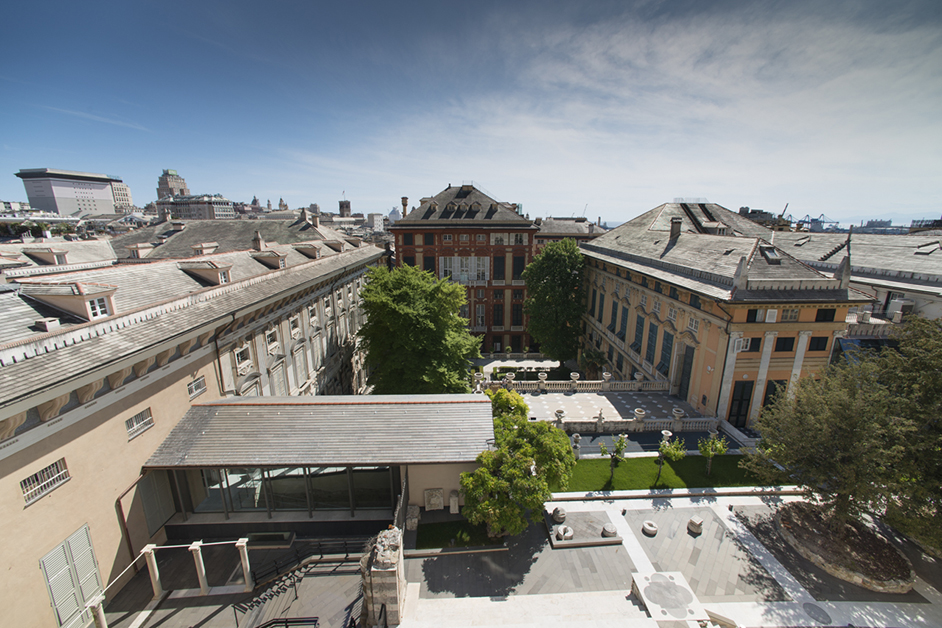
Click here to view image
Il camminamento fra Palazzo Bianco e Palazzo Tursi

Click here to view image
Il camminamento fra Palazzo Bianco e Palazzo Tursi

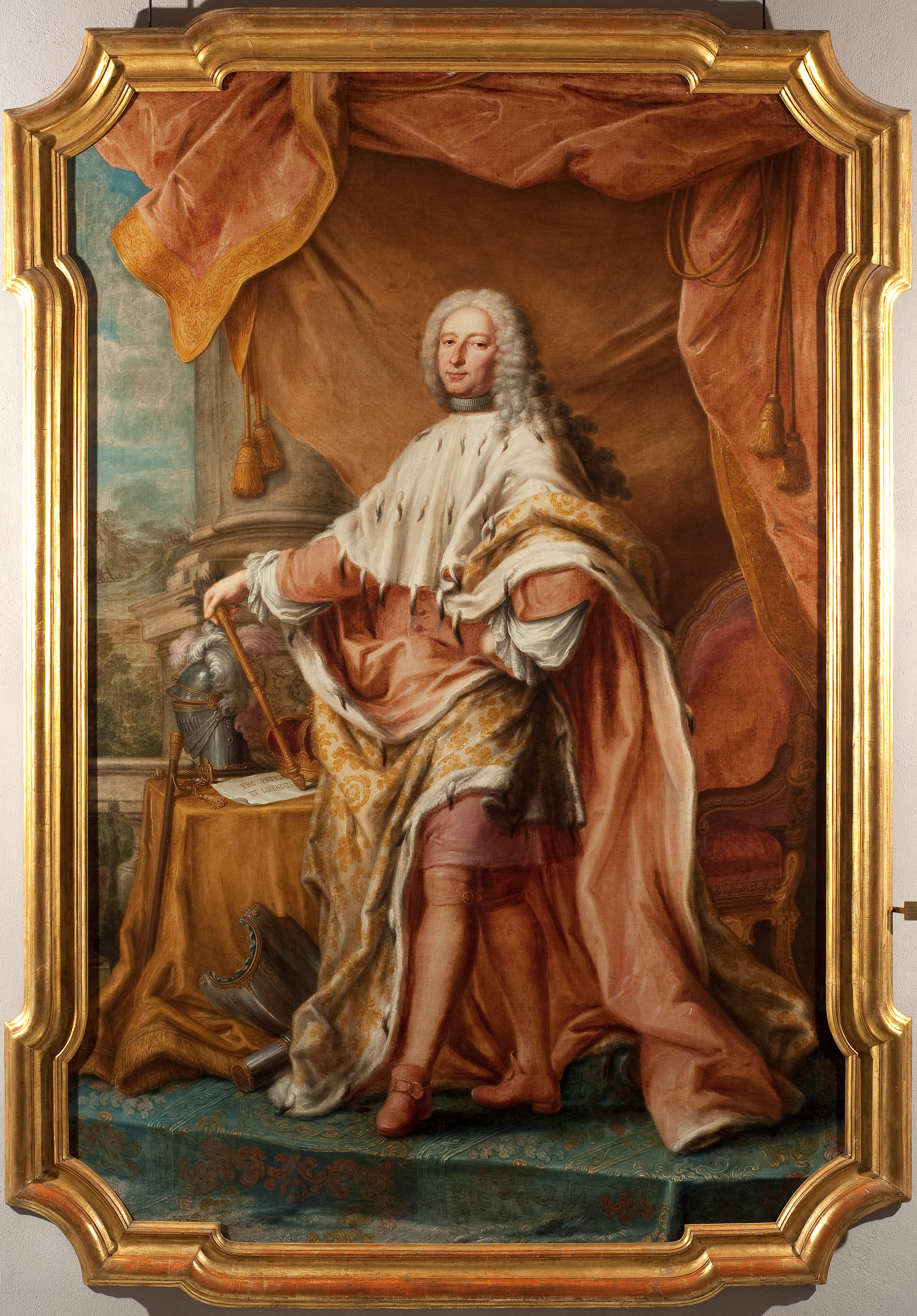
Click here to view image
Jacopo Antonio Boni (Bologna, 1688 - Genova, 1766)
Boni Jacopo Antonio - Gio. Francesco II Brignole-Sale

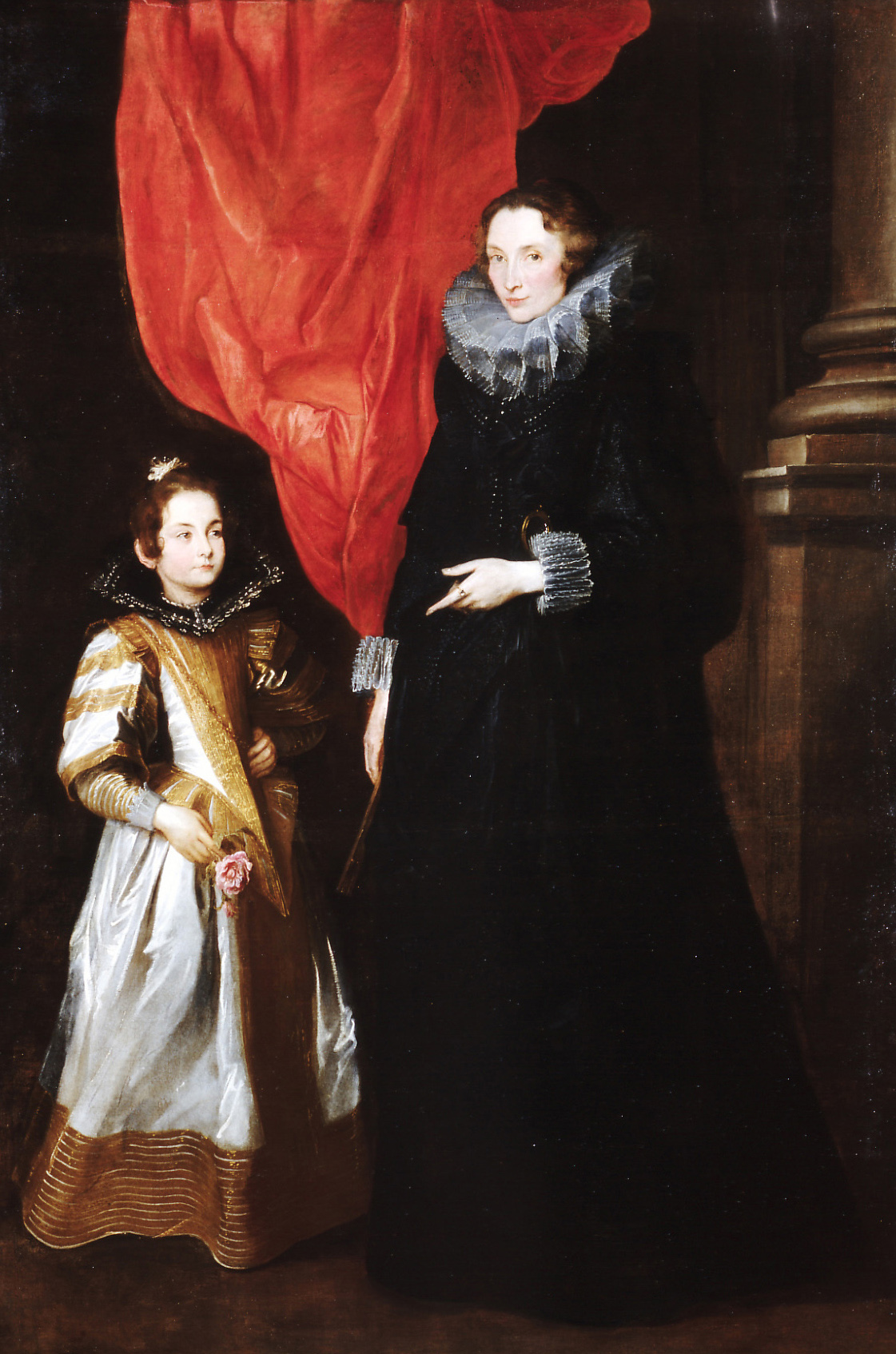
Click here to view image
Antoon Van Dyck (Anversa, 1599 - Londra, 1641)
Olio su tela, cm. 226,3 x 151,8
Commissionato da Gio.Francesco Brignole (1582-1637) nel 1627, il grande ritratto raffigura la moglie del committente assieme ad Aurelia, una delle due figlie. Il dipinto è attualmente conservato a Palazzo Rosso per volontà di Gio.Francesco I Brignole-Sale (1643-1694) di mantenere il ritratto legato alla casata. L’intervento di restauro eseguito per la mostra genovese dedicata all’artista fiammingo nel 1997, ha rivelato una stesura pittorica ben conservata in entrambe le figure e ha restituito freschezza al viso della madre quarantaduenne.
La pulitura ha pure confermato la complessiva severità dell’immagine data dal nero vestire della dama, secondo il gusto spagnoleggiante dell’epoca, e dal fondo buio, dal quale una luce proveniente da sinistra rivela solo una colonna su un alto plinto e un ricco tendaggio rosso. Il quadro mostra le eccellenti qualità pittoriche dell’artista nella ricchezza dei chiaroscuri, che conferiscono alla bianca veste cerimoniale della fanciulla un accento luministico drammatizzato e scultoreo.

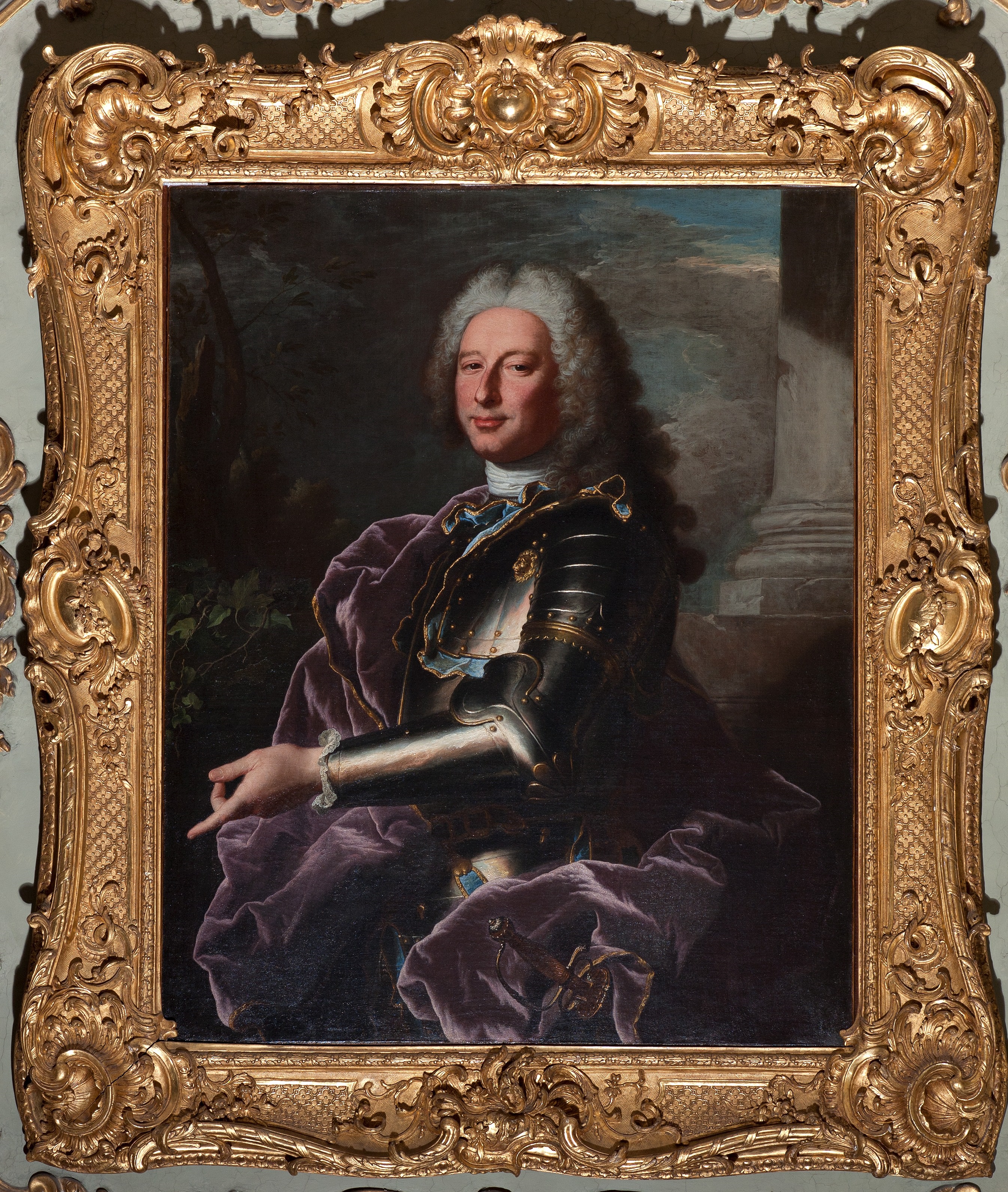
Click here to view image
Hyacinthe Rigaud (Perpignan, 1659 - Parigi, 1743)
Olio su tela, cm. 101,5 X 80
Rigaud. Francesco II Brignole Sale (foto Visconti 2011)
Questa aulica e raffinata immagine è stata realizzata nel 1739 da Rigaud, ritrattista ufficiale del re di Francia Luigi XV, in occasione del soggiorno a Parigi di Gio. Francesco II Brignole - Sale in qualità d’ambasciatore della Repubblica di Genova. L’artista, a partire dall’ultimo decennio del Seicento, aveva iniziato a lavorare come ritrattista esclusivamente per la corte del Re Sole, elaborando un modello
di ritratto ufficiale vivace e insieme solenne nel taglio e nella composizione, a mezza figura o a figura intera, sullo sfondo di modelli architettonici e paesistici.
Nella sua opera appare evidente una attenta riflessione sui modelli di Anton van Dyck, rielaborati però in impianti di maggior rigidezza e austerità.
Il ritratto di Palazzo Rosso – il cui pendant raffigurante Battina Raggi, moglie di Gio. Francesco II, non fu eseguito dal vivo, ma in effige – è stato realizzato per soddisfare un evidente intento autocelebrativo da parte del committente, che desidera perpetuare la memoria di sé e della sua nobile famiglia. Il gentiluomo è stato ritratto di tre quarti e indossa, sopra la corazza da parata, un manto di prezioso velluto dai freddi toni viola-rosati su cui la luce riflessa crea effetti di raffinato cangiantismo. Sullo sfondo si vede un lussureggiante paesaggio e a destra una colonna di candido marmo, elemento spesso presente anche nei ritratti di Van Dyck, con una precisa connotazione simbolica: rimanda infatti pur genericamente a un lussuoso palazzo gentilizio divenendo allusione al potere e alla ricchezza del protagonista.

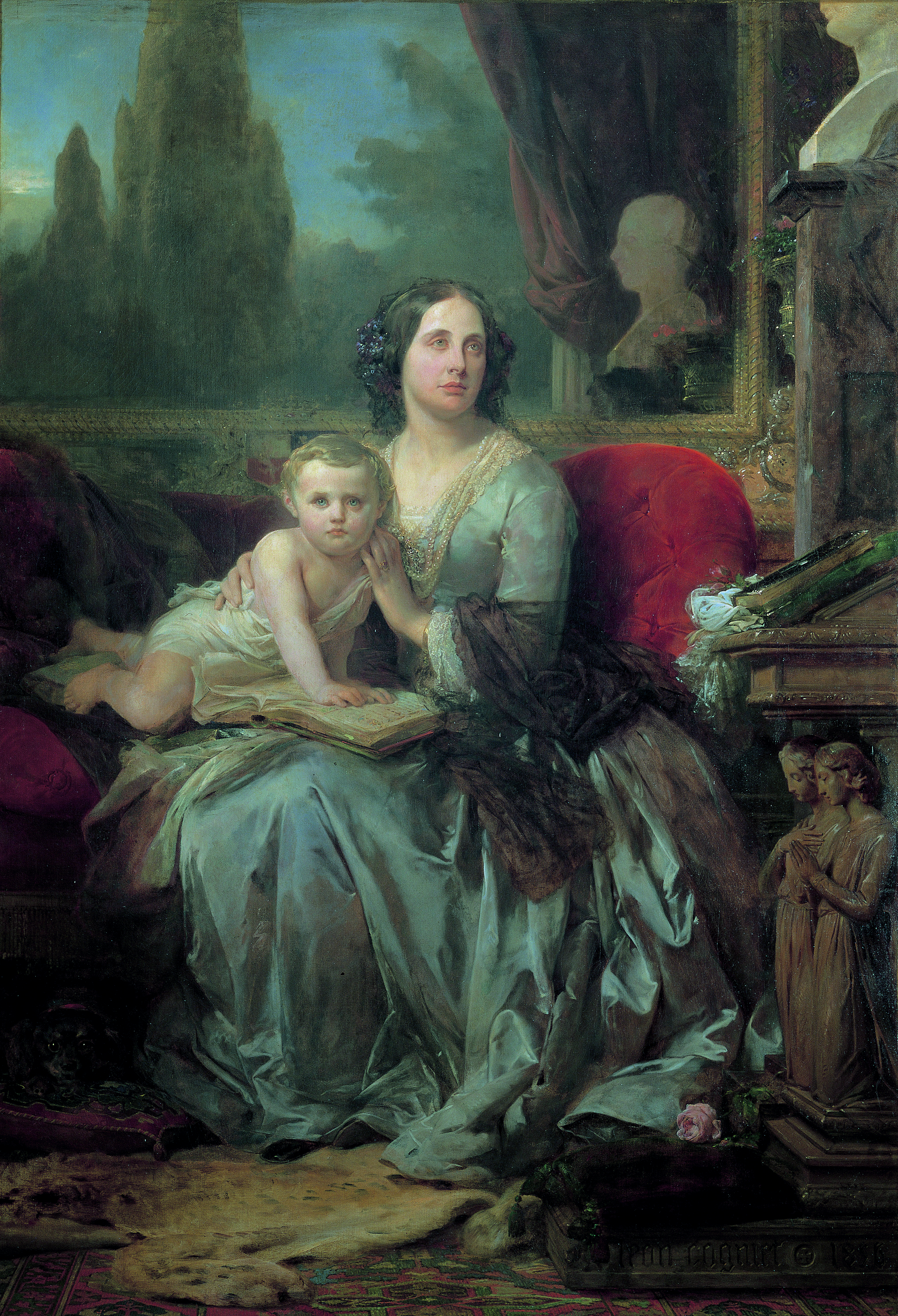
Click here to view image
Portrait of Maria Brignole Sale with her son Filippo
Brignole-Sale De Ferrari Maria 1889 Genova
Leon Cogniet (Parigi, 1794-1880)
PB 12
Olio su tela, cm. 200 x 148
Maria Brignole-Sale De Ferrari, Duchess of Galliera, was one of the most generous figures in the city. The last descendant of the noble Brignole-Sale family, she spent most of her life in Paris, where her husband, Raffaele De Ferrari, one of the most skilled, fortunate and wealthy financiers of his time, carried out his business. After his death, having inherited an immense fortune and having no heirs, since her only surviving son, her second son Filippo, renounced his surname and, with it, the family inheritance, the duchess devoted herself to great charitable works, founding nurseries, hospitals (the Galliera hospital is still the second largest in Genoa today) and orphanages, both in France and in Genoa. In 1874, she donated Palazzo Rosso, the ancestral home of the Brignole-Sale family, to the City of Genoa, along with the art collections it contained, as a lasting testimony to the family's magnificence. This act was followed by a bequest in her will (1889) granting the city Palazzo Bianco and another rich collection of paintings and sculptures. Léon Cogniet, a portrait painter who was extremely well known in France at the time for his ability to evoke the intimate personality of his subjects, painted her in his prestigious Parisian residence, the Hôtel de Matignon, now the official residence of the French Prime Minister, as she held her second son, Filippo, on her lap, leaning on the ancient Brignole Bible. Almost oblivious to him, Maria casts a melancholic glance towards the marble bust reflected in the mirror at the end of the wall; it depicts Andrea, her eldest son, who died at the age of fourteen, to whom the rose placed on the kneeler also alludes, as a sign of a tender flower destined to perish. The painting depicts the Duchess of Galliera with her son, both sitting on a sofa; the child is positioned on the left side of the painting and is supporting himself with his arms, which he has placed on an open book on his mother's lap. On the right is a kneeler with two caryatid angels, and slightly above it, a marble bust can be glimpsed. Behind the two figures, a large mirror reflects the scene of a wooded landscape; at the woman's feet are a Persian rug and a leopard skin; a small dog is drawn on a cushion nearby.

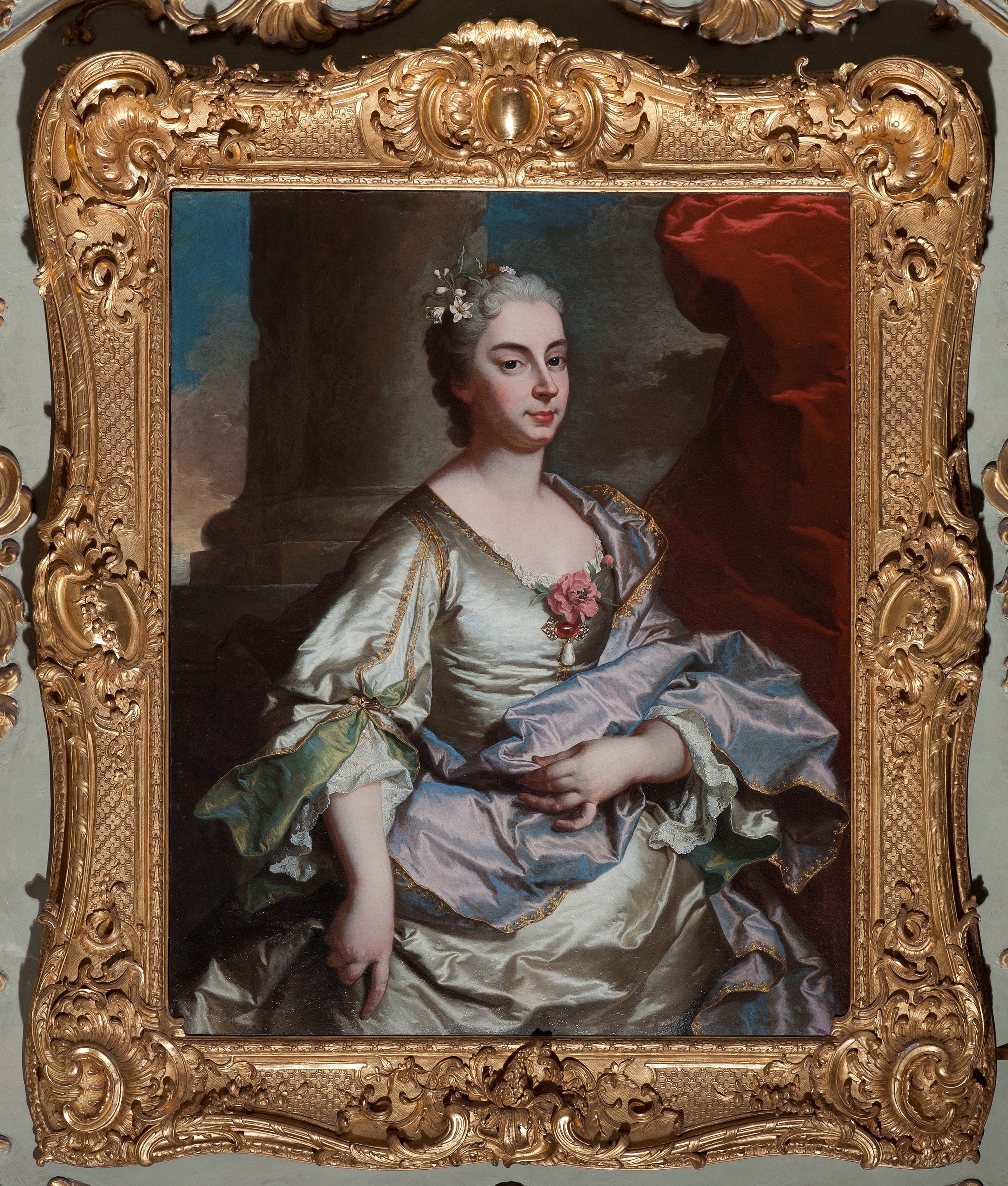
Click here to view image
Hyacinthe Rigaud (Perpignan, 1659 - Parigi, 1743)
Olio su tela, cm. 101 X 80
Rigaud. Battina Raggi (foto Visconti 2011)

The Wolfsonian Museum is part of a group of Museums in Nervi together with the GAM Modern Art Museum, the Giannettino Luxoro Museum and the Frugone Collections.
The collection, created by the American philanthropist Mitchell “Micky” Wolfson Jr. and donated by him to the city of Genoa through the Palazzo Ducale Foundation for Culture, focuses in particular on the decorative and propaganda arts of the period 1880-1945.
Starting from the taste for the exotic which spread in Italy during the nineteenth century, the exhibition encompasses the major linguistic and expressive currents of the first fifty years of the twentieth century, from Liberty to Déco, from the twentieth century to Rationalism, to offer the visitor a panorama of the period between the last decades of the nineteenth century and the first half of the twentieth, in which the artistic expressions interacted closely with the political, social, economic, technological and aesthetic context in which they saw the light.
Thanks to the vast variety of artefacts preserved - paintings, sculptures, furniture, glass, ceramics, metals, fabrics, architectural drawings and designs, posters, sketches, graphics, books, magazines and documents - mainly related to the Italian context but with significant evidence of the foreign influence, the Wolfsonian collection documents, faithful to the approach of its creator, not only the aesthetic values of the objects it contains, but also the profound historical and social significance of the time.
The museum is characterized by its chronological-thematic layout, which involves the reconstruction of entire rooms, it also has an area dedicated to temporary exhibitions.
The Wolfsonian Museum is something unique in the rich panorama of Italian museums. First of all, for the figure of the collector who with passion and curiosity formed this important artistic collection over the years, encouraging, at the same time, an institution which was to be entrusted with its conservation, study and growth. Secondly, for the originality of the collection which, consisting of a wide range of materials - paintings, sculptures, furniture, complete furnishings, glass, ceramics, wrought iron, silver, fabrics, architectural drawings, graphics, posters and advertising materials , sketches and drawings, books and magazines - focuses mainly on the decorative and propaganda arts from 1880 to 1945.
However, the collection is not limited to identifying the aesthetic values of the objects, but above all focuses on the historical and social meanings that they convey. In fact, each piece of this collection contributes to recomposing, in a dense network of historical and artistic references and counterpoints, the complexity of a historical period that has marked the birth and evolution of the contemporary era. All the works contribute to analysing those factors of change that characterized this dense historical period: the profound links between art and politics; the dialectic between avant-garde impulses and references to tradition; changes in taste in the field of furniture; the contribution of new materials and new technologies in the evolution of design; the impact on the society of the time by new means of transport; the sophisticated use of persuasive messages in advertising; the interaction between the great urban transformations and the formation of a new industrial civilization.
Always closed: non-holiday Mondays, January 1st, and December 25th.
Last admission half an hour before closing.
WEATHER WARNING
In case of weather warning "RED" the Museum will be closed to the public and all events will be cancelled.
DOG-SITTING SERVICE
Dogs & Museum allows museum visitors who are dog owners to fully enjoy their visit by entrusting their pet to a professional dog sitter for the entire duration of their stay inside the museum.Created by Bauadvisor.
Learn more about Dogs & Museum at this link: https://www.museidigenova.it/it/node/13016
Visitors with a valid admission ticket to one of the participating city museums are entitled to a discount on the service fee offered by Bauadvisor.
Discover the Genova Museum Card

Visit route
The exhibition is based on two fully accessible floors. All floors are connected via an accessible lift, with a beep sound signalling elevator arrival and door opening/closing.
Accessibility for wheelchair users
A wheelchair is available for use. Please ask a member of staff who will be able to assist.
Toilets
It is possible to use the accessible and equipped restrooms located on the second floor.
Parking
It is possible to leave the car, equipped with a blue badge (art. 12 DPR 503/96), in the reserved parking spaces in Via Capolingo, next to the Museum entrance (2 spaces). Due to the presence of a 5 cm high step on the right side of the parking spaces and the lack of a protected and marked route, visitors in wheelchairs will have to face a short stretch of road down to the roadway. It is also possible to park in the Nervi Station parking lot, which has 130 parking spaces and is 400 metres away.
TICKETS
Individual Ticket Wolfsonian Museum
regular price 5 €
reduced price 4 €
Who is entitled to a reduced ticket
Reduced 2 € for young people aged 18 to 25 year
gratuito
Who can enter for free
special ticket 3 museums: 10 € Wolfsonian Museum + GAM + Frugone Collections
In case of particular events or temporary exhibitions ticket prices are subject to change.
Booking online (presale 1 €)
For complaints and returns download this form
In case of impossibility to visit the museum, you can request a refund of the entrance tickets (single, full or reduced, cards), including those purchased online. The refund request must be submitted within 15 days of the outage using this form.
Ticketone Sales Points
Tabaccheria 248 - Via Simone Pacoret de Saint Bon 1/R 16155 Genova
Reina Jesus Mendoza Ruiz - Planetwin365 – PlanetPay Piazza Sciesa 45 R 16157 Genova
Tabaccheria Giarelli - Via Paolo Giacometti 58/60 R 16143 Genova
Tabaccheria Tredici Bis di Galli Fabrizio - Piazzale Parenzo 23/R 16139 Genova
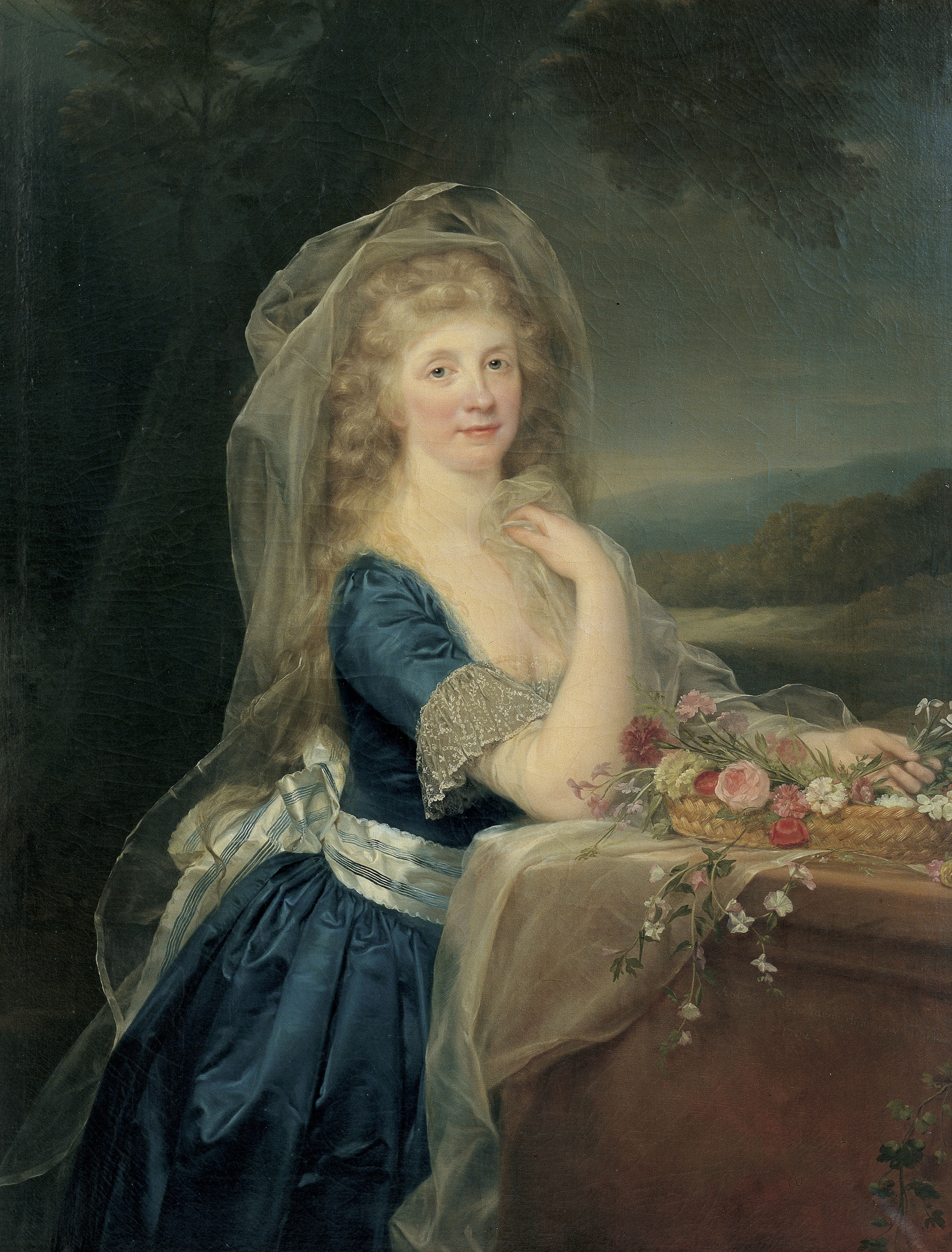
Click here to view image
Anton Von Maron (Vienna, 1733 - Roma, 1808)
Olio su tela, cm. 133 x 97
La dama raffigurata in questo ritratto di Anton von Maron, pittore viennese allievo di Mengs, è la moglie di Anton Giulio II Brignole-Sale, Anna Pieri Brignole, vivace e colta esponente del patriziato senese, sposa dell’aristocratico genovese nel 1786. Trasferitasi a Genova in un nuovo appartamento all’ultimo piano di Palazzo Rosso (oggi chiuso al pubblico in attesa di restauro), la nobildonna senese ospiterà nel suo salotto gli intellettuali illuministi del tempo. Spesso a Parigi, Anna Pieri sarà ammessa come dama di palazzo alla corte di Maria Luisa d’Austria, seconda moglie di Napoleone, ottenendo da Bonaparte il titolo di contessa e per i figli prestigiose cariche. Von Maron, conosciuto per essere stato il ritrattista ufficiale della corte austriaca, eseguì il dipinto, caratterizzato da un’evidente sensibilità tardo-settecentesca e da uno stile aggraziato e prezioso, durante un soggiorno genovese della dama nel 1792.

Click here to view image
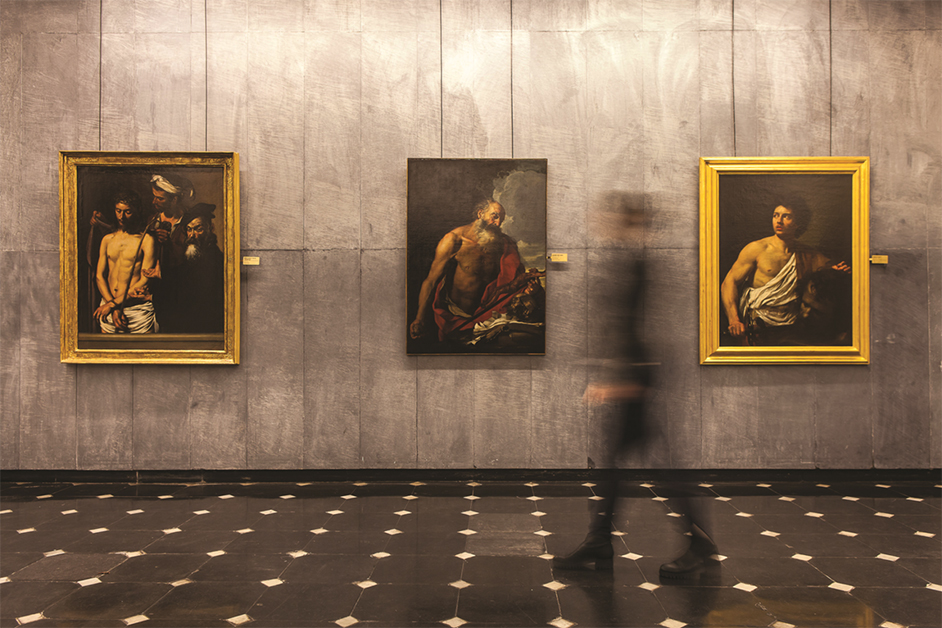
Click here to view image




Headquarters:
Municipality of Genoa - Palazzo Tursi
Via Garibaldi 9 - 16124 Genoa
C.F / VAT 00856920102
Follow us on Facebook
Follow us on Tripadvisor